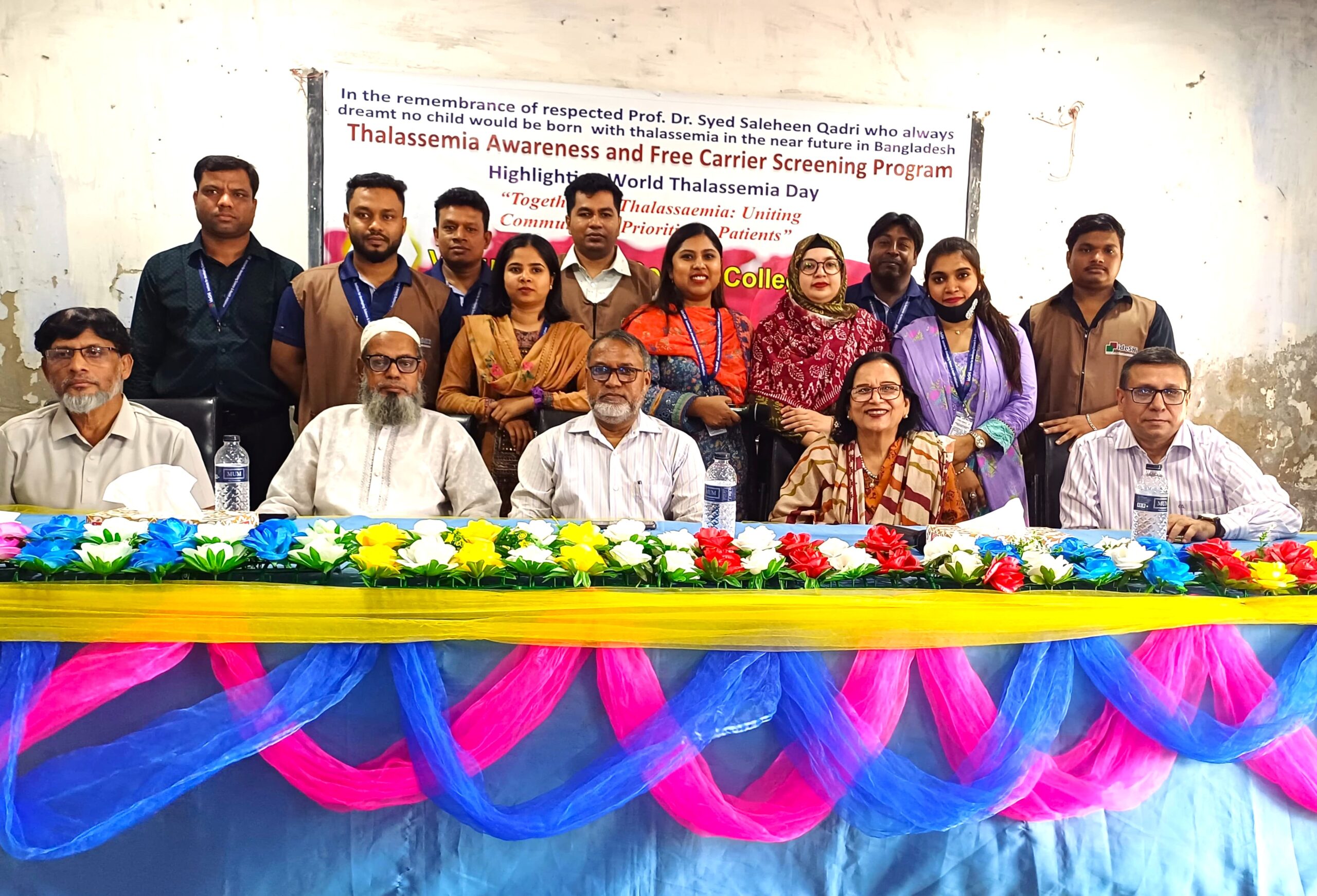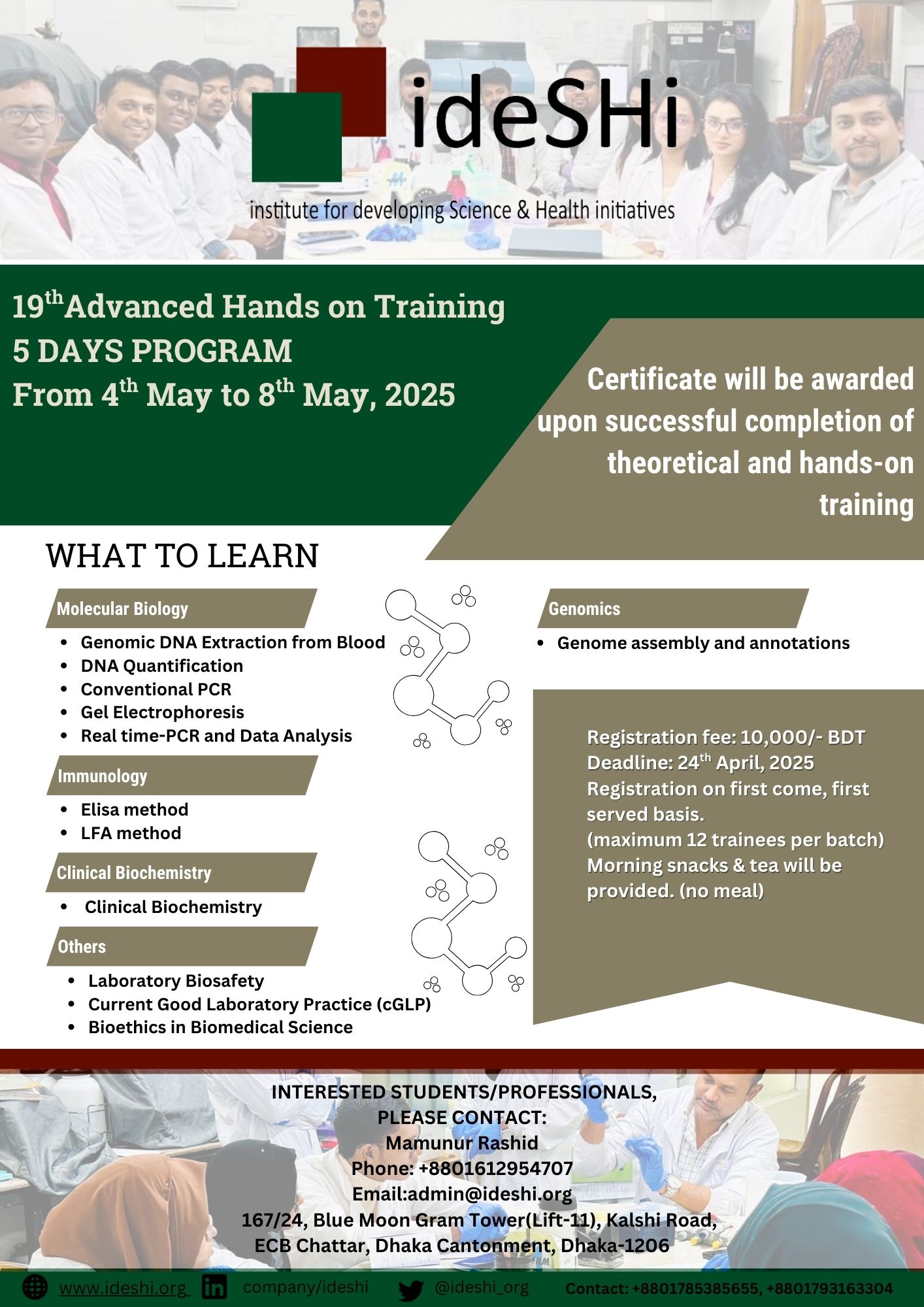For decades fighting communicable diseases have been the principal focus in Bangladesh. So much so that little attention was put in studying and preventing non-communicable diseases. These non-communicable diseases include inherited genetic disorders that affect a significant portion of the population. Among the noncommunicable diseases, thalassemia is the most common congenital single gene disorder in Bangladesh. Bangladesh with a population of 170 million and a carrier status of 10%, about 8990 children are born with thalassemia each year. A recent data from 3 laboratories in Dhaka doing screening for thalassemia and other hemoglobinopathies has revealed that nearly 200 children are diagnosed with thalassemia every month. Being a homozygous recessive disorder the inheritance pattern is such that a married couple with both being carrier will have a 25% chance of producing offspring with the disease. However prevention of this disease is easy. Tremendous success have been attained by several countries in preventing incidence of thalassemia and HbE diseases by introduction of mandatory carrier screening. Cyprus started its screening program in 1970s and have been able to reduce the number of children born with this hereditary blood disease from one in every 158 births to nearly zero. Unfortunately, till date Bangladesh has not taken any effective measures in tackling such alarming issues of public health problems and nationwide carrier frequency is unknown. Information regarding beta-thalassemia and Hb E carriers in Bangladesh is important for prevention and control of thalassemia and Hb E disease.
Therefore, on Thalassemia Day 2018, ideSHi took an initiative in collaboration with Directorate General of Health services, MOHFW to determine the prevalence of ß-thalassemia and hemoglobin E (Hb E) carriers in Bangladesh using medical college/university-based field settings. A total of 1125 unmarried participants aged between 18-25 years were enrolled in the study with the intent to screen students who have come from across the country to study in the universities and medical colleges in Dhaka city. The consideration of participant recruitment sites were based on the fact that these public universities and medical colleges are attended by the students who come from all 8 divisions of Bangladesh.






